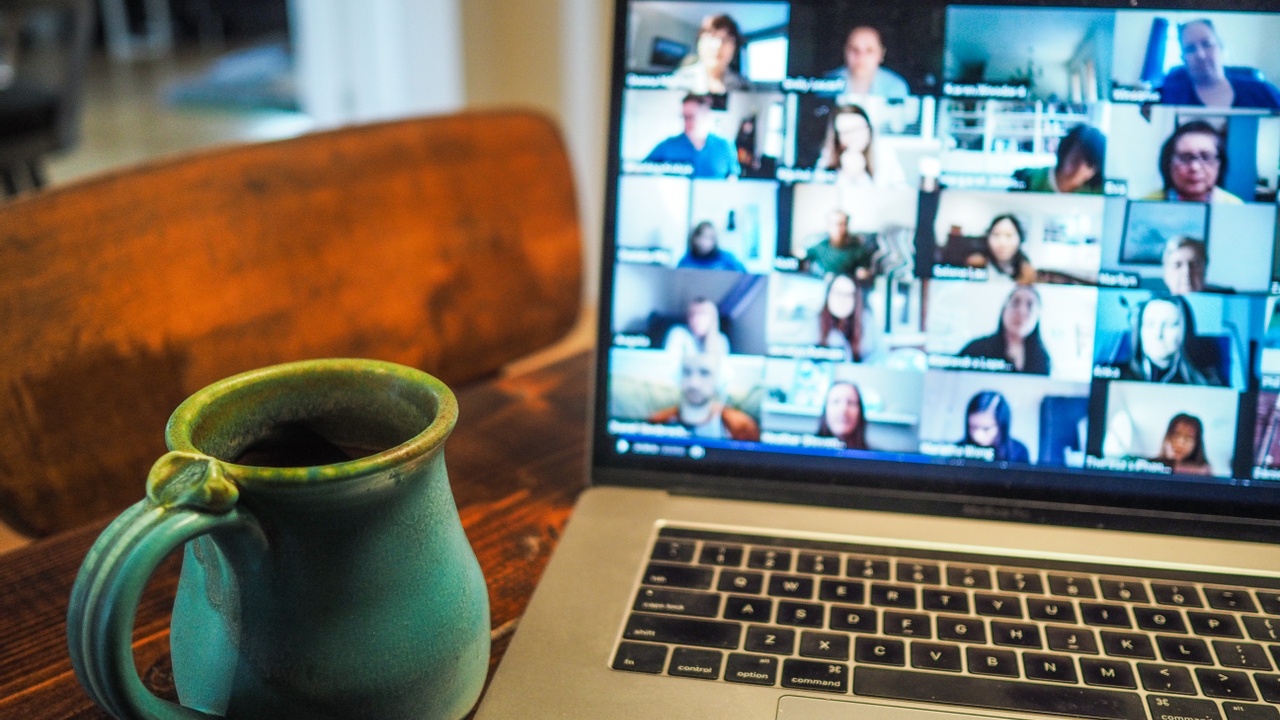You Lookin' At Me? (AKA The Missing Ingredient in Your Virtual Presentation)

As the world slowly begins to reopen, you know what I’m most looking forward to?
Eye contact.
Don’t get me wrong, hugs are high up on that list as well, but after over a year of Zoom meetings I am craving some actual eye contact.
But, since I doubt virtual meetings are going anywhere anytime soon, I thought I’d use this week’s newsletter to address the million dollar question:
How do I simulate eye contact on Zoom?
The short answer is probably pretty obvious:
Look directly into the camera when you’re speaking.
This is what reads as eye contact to the folks on the other end of the call.
When you look directly down the barrel of the camera, your audience feels like you are looking right into their eyes.
It’s one of the most powerful public speaking techniques you can utilize in the world of virtual meetings.
There is a problem with this technique though...It feels really weird.
Most of us, myself included, would much rather look at the gallery of faces in front of us, so we can read our audience’s reactions as we’re speaking.
Not to mention, it’s impossible to look directly into the camera if you’re also reading your notes.
But, if you’ve ever seen a seasoned public speaker deliver a talk directly to camera, you’ve probably also noticed how powerful and confident they look when they do it.
So, what can we do? What’s the happy medium here?
How can we simulate eye contact in a virtual presentation without feeling itchy and self-conscious the whole time?
Let’s break it down.
Here’s what you gotta know...
1. Know When to Fake it
When I’m delivering a presentation, there are times when I want to check in with my audience. It’s too lonely to stare directly into the camera the whole time.
So, here’s a quick and easy way to cheat eye contact:
Reposition your gallery so your audience is centered directly below your camera.
This way, when you sneak a peek at your audience, your eyes are only shifting their focus a couple inches below your camera.
It will still largely read as eye contact on the other end.
The same strategy goes if you’re reading your notes off a Word document.
In this case, you want to position your notes directly under the camera.
(HINT: The trick to this technique is to scroll liberally!)
Remember, when using this technique, you are essentially acting as your own teleprompter.
As you scroll through your document, you want to make sure that you’re keeping the text that you’re reading as close to the top of the screen (and thus your camera) as possible.
I won’t lie, this skill requires a bit of coordination at first, but once you get the hang of it you’ll never want to go back to printed notes!
2. Know When to Push Yourself
I'm a big believer in baby steps. If you know that looking directly into the camera gives you massive anxiety, I am not about to advocate that you spend 80% of your presentation speaking directly to the camera.
Here’s where I do think you should push yourself…
Look into the camera when you introduce yourself.
Why?
Because this is the one part of the presentation where I guarantee you don’t need to check your notes.
You know your name.
This is the safest possible part of your presentation to deliver straight to camera.
And, as an added bonus, it’s one of the places where eye contact feels the most satisfying to your audience.
On a basic human level, we want you to make eye contact with us when you introduce yourself. If you can push yourself to give us those 5 seconds of eye contact at the very top of your presentation, you’ve set yourself up for a much more engaged virtual experience.
And there you have it! Those are my go-to hacks for faking eye contact on Zoom.
Try them out this week and let me know how it goes!
Now go forth and rock that virtual presentation!
Stay safe, and I hope to make eye contact with you in the real world very soon.

Sara Glancy is an NYC-based actor and public speaking coach and the founder of Speak Masterfully, a service that helps professionals take the stage with less fear and more fun!
Want to nail your next presentation?!
Apply this basic outline to any speaking engagement to feel twice as prepared in half the time!


